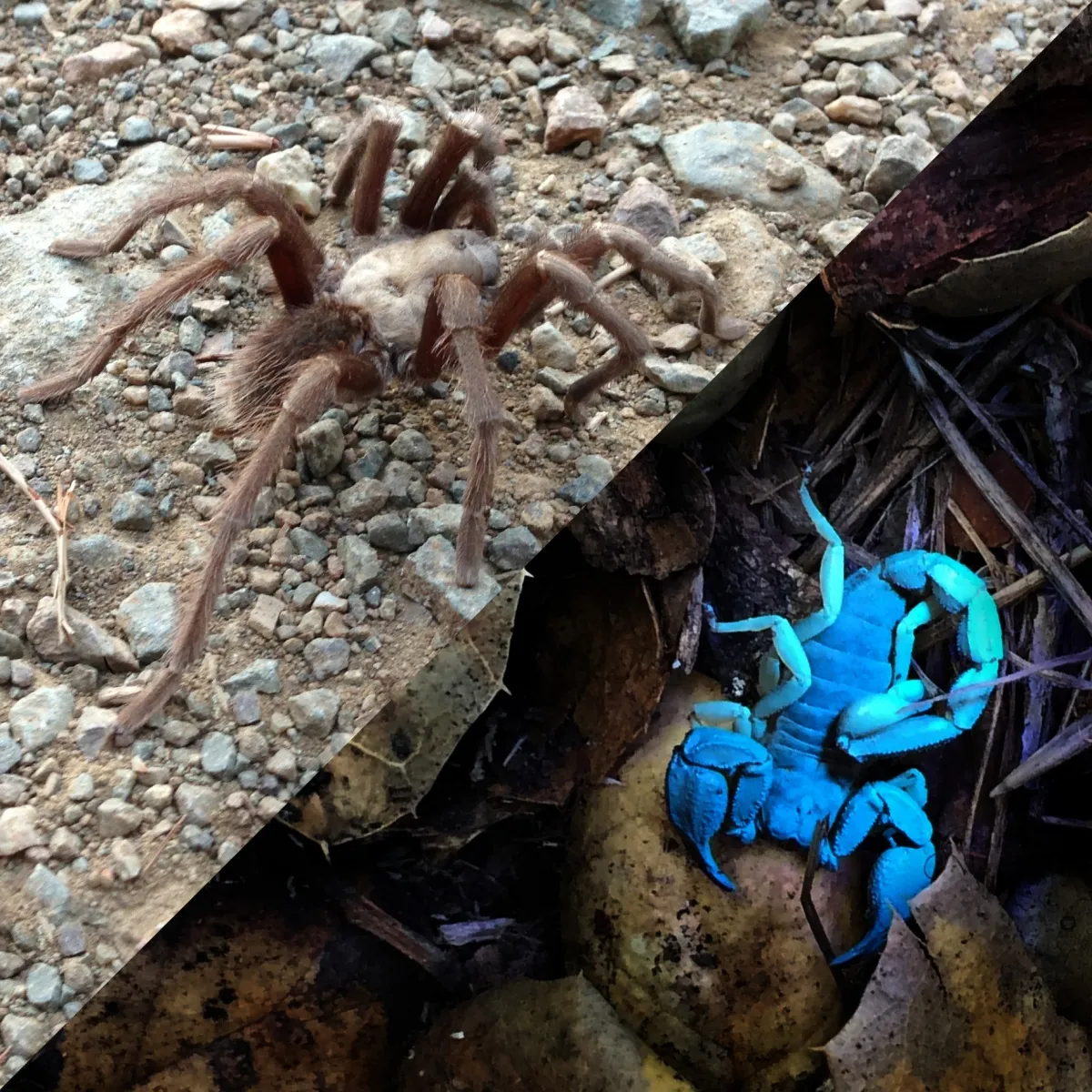Scorpion vs Tarantula Understanding the Basics
The animal kingdom is full of fascinating creatures, and among the most intriguing are scorpions and tarantulas. While both belong to the class Arachnida and share some similarities, they are distinct animals with unique characteristics, habitats, and behaviors. Understanding the difference between these two can be crucial for anyone interested in wildlife, those living in areas where they are prevalent, or simply those curious about the natural world. This article provides a detailed comparison, highlighting the key differences between scorpions and tarantulas to help you better understand these remarkable creatures.
What Is a Scorpion
Scorpions are ancient arthropods that have roamed the Earth for over 400 million years. These nocturnal predators are easily recognizable by their segmented bodies, eight legs, and a prominent tail that curves over their back, ending in a venomous stinger. They play a vital role in their ecosystems, controlling insect populations and serving as prey for larger animals. Their ability to survive in diverse environments, from deserts to rainforests, makes them a remarkable example of adaptation and resilience. The scorpion’s history is a testament to their survival skills and adaptability.
Scorpion Appearance and Characteristics

The appearance of a scorpion is quite distinctive. They have a flattened body divided into two main parts: the cephalothorax (head and thorax fused together) and the abdomen (also known as the metasoma). The cephalothorax bears the eyes, mouthparts (chelicerae and pedipalps), and four pairs of legs. The pedipalps are large, claw-like structures used for grasping prey. The abdomen is segmented, and the last segment is the telson, which houses the venomous stinger. Scorpions vary in size, from less than an inch to over eight inches, and come in various colors, including brown, black, yellow, and red. Their exoskeleton provides protection and support, while their nocturnal habits often keep them hidden during the day.
Scorpion Habitat and Behavior
Scorpions are found on every continent except Antarctica, thriving in a wide range of habitats. They are most commonly associated with arid and semi-arid environments, such as deserts and grasslands, where they find shelter under rocks, in burrows, or beneath the bark of trees. Scorpions are primarily nocturnal hunters, using their pedipalps to detect vibrations in the ground, which helps them locate prey, mostly insects, spiders, and other small invertebrates. They are solitary creatures, except during mating season. Reproduction involves a complex courtship ritual, followed by live birth of the young, which then ride on the mother’s back until their first molt. This unique behavior ensures the survival of the young scorpions.
What Is a Tarantula
Tarantulas are large, hairy spiders known for their impressive size and diverse appearances. They are found in tropical and subtropical regions around the world. Unlike scorpions, tarantulas are not venomous in a way that poses a significant threat to humans, although they can deliver a painful bite if provoked. They are popular in the pet trade due to their relatively docile nature and striking appearance, making them a fascinating subject for study and observation. Their ecological role as predators is crucial in controlling insect populations, and their presence contributes to the balance of their habitats.
Tarantula Appearance and Characteristics

Tarantulas are characterized by their large size, hairy bodies, and two main body parts: the cephalothorax and the abdomen. The cephalothorax houses the eyes, mouthparts, and legs. The abdomen is soft and contains the internal organs. They have eight eyes, although their vision is not as sharp as other spiders. Tarantulas come in various colors and patterns, from the vibrant blues and oranges to the more subdued browns and blacks. They also have two chelicerae, or fangs, used for injecting venom into their prey. Their bodies are covered in hairs, some of which are urticating hairs, which they can flick at predators as a defense mechanism.
Tarantula Habitat and Behavior
Tarantulas are found in diverse habitats, including rainforests, grasslands, and deserts. They are typically terrestrial, but some species are arboreal, living in trees. They are ambush predators, either constructing burrows or utilizing natural shelters. They primarily hunt insects, but larger species may also feed on small vertebrates, such as mice and lizards. Tarantulas are generally solitary creatures, only interacting during mating season. Females can live for many years, while males typically have shorter lifespans. Their behavior is generally more docile than scorpions, making them relatively safe to observe and study. Their life cycle involves molting, a process where they shed their exoskeleton to grow larger.
Top 5 Differences between Scorpions and Tarantulas
Body Structure and Anatomy

The most obvious difference lies in their body structure. Scorpions have a segmented body with a distinctive tail ending in a stinger, and large pedipalps (pincer-like claws). Tarantulas, on the other hand, have a two-part body and eight legs. Scorpions are built for precision strikes with their stingers, while tarantulas are more adapted for grasping and subduing prey with their fangs. The exoskeleton also differs: scorpions have a more rigid, armor-like exoskeleton, while tarantulas have a hairy covering. These anatomical differences reflect their different hunting strategies and ecological roles.
Venom and Defense Mechanisms
Scorpions use venom as their primary defense mechanism, injecting it through the stinger in their tail. The potency of scorpion venom varies depending on the species, but some can be highly dangerous to humans. Tarantulas also have venom, but it is generally not considered as potent or life-threatening to humans. Instead, tarantulas rely on their fangs for defense and have urticating hairs on their abdomen, which they can flick at potential threats, causing irritation.
Habitat and Geographic Distribution
Scorpions and tarantulas exhibit different habitat preferences. Scorpions are more commonly found in arid and semi-arid environments, although they can also live in various climates. They are present on every continent except Antarctica. Tarantulas, on the other hand, are primarily found in tropical and subtropical regions, although some species also inhabit temperate zones. Their geographic distribution is thus influenced by temperature, humidity, and prey availability. The habitat differences are key to understanding where one might encounter these arachnids.
Diet and Feeding Habits

Both scorpions and tarantulas are predators, but their diets and feeding habits differ. Scorpions primarily feed on insects, spiders, and other small invertebrates. They use their pedipalps to capture prey, and their venom to immobilize it before consuming it. Tarantulas also feed primarily on insects, but larger species may consume small vertebrates, such as mice, lizards, and small birds. Tarantulas often ambush their prey, waiting for it to come close before launching an attack. The size of the arachnid determines the size of its meal.
Overall Danger and Threat Level
The perceived and actual danger level varies between scorpions and tarantulas. While both can bite or sting, the primary danger comes from the venom. Some scorpion species have venom that is highly toxic to humans, potentially leading to severe pain, paralysis, or even death. Tarantulas, while capable of biting, generally have less potent venom, and their bites are usually comparable to a bee sting. Furthermore, tarantulas are less likely to bite than scorpions are to sting. The danger level is heavily influenced by the species, with some being entirely harmless and others requiring careful handling.
Scorpion vs Tarantula A Summary
In conclusion, scorpions and tarantulas, while both arachnids, are distinct creatures with key differences in their anatomy, defense mechanisms, habitat, and behavior. Scorpions are identified by their segmented bodies and venomous stingers, inhabiting a broad range of environments. Tarantulas are characterized by their large size, hairy bodies, and reliance on fangs and urticating hairs for defense, mainly found in tropical and subtropical regions. Understanding these differences is crucial for anyone interacting with these creatures, ensuring both safety and a deeper appreciation for the diversity of life on Earth. Their interactions with humans and their respective ecosystems make them fascinating subjects for study and observation. They represent different evolutionary paths and survival strategies within the arachnid world.
